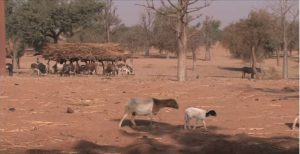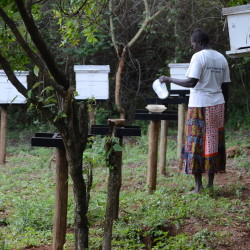 Originally published on the WRI website. As India’s summer intensifies, many states are already in the midst of a drought—and the hottest days have yet to arrive. At the same time, water-intensive agriculture, rapid urban expansion, increases in industrial activity and growing energy production are driving the country’s water demand upward. More than half of India is now considered severely water stressed.
Originally published on the WRI website. As India’s summer intensifies, many states are already in the midst of a drought—and the hottest days have yet to arrive. At the same time, water-intensive agriculture, rapid urban expansion, increases in industrial activity and growing energy production are driving the country’s water demand upward. More than half of India is now considered severely water stressed.
Part of the problem is that India still manages its water as an infinite resource on a linear model of withdrawal, consumption and disposal. But a more efficient management model is to look at water from a “circular economy” perspective. Water’s usability doesn’t need to end once it washes down the drain. Rather, we can see industrial and domestic wastewater as a valuable resource from which usable water, nutrients and even renewable energy can be extracted.




 Over the last decade World Vision and partners have been working very hard to introduce Farmer Manager Natural Regeneration (FMNR) wherever a receptive ear can be found. Uptake generally follows the following pattern: First there is disbelief that this low cost, simple technique can be beneficial. Deep-seated paradigms such as “trees are bad for crops, trees grow too slowly and indigenous trees have no value” are challenged and so there is some push-back.
Over the last decade World Vision and partners have been working very hard to introduce Farmer Manager Natural Regeneration (FMNR) wherever a receptive ear can be found. Uptake generally follows the following pattern: First there is disbelief that this low cost, simple technique can be beneficial. Deep-seated paradigms such as “trees are bad for crops, trees grow too slowly and indigenous trees have no value” are challenged and so there is some push-back. Farmer Managed Natural Regeneration (FMNR) methods, implemented in the area as part of World Vision’s Mogotio ADP, are opening up new opportunities for communities and allowing farmers to return to their pastoral roots. As part of FMNR methods, thick undergrowth is cleared from around local tree varieties, providing a protective canopy and allowing grass to thrive in the newly created shade. Land once lost to erosion is being reclaimed for productivity and profit.
Farmer Managed Natural Regeneration (FMNR) methods, implemented in the area as part of World Vision’s Mogotio ADP, are opening up new opportunities for communities and allowing farmers to return to their pastoral roots. As part of FMNR methods, thick undergrowth is cleared from around local tree varieties, providing a protective canopy and allowing grass to thrive in the newly created shade. Land once lost to erosion is being reclaimed for productivity and profit.